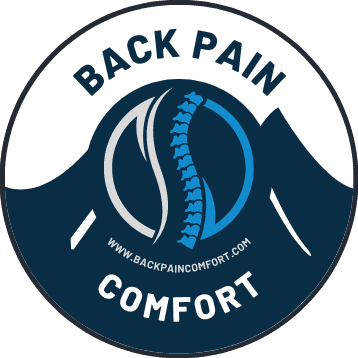
Back pain is one of the most common complaints among adults worldwide, affecting millions of people every year. While there are numerous causes of back pain, ranging from acute injuries to chronic diseases, lifestyle factors play a significant role. Notably, body weight has been identified as a critical factor influencing the health of your back. In this blog post, we’ll delve into how excess weight can contribute to back pain, explore the types of back pain most associated with being overweight, and touch on other lifestyle elements that exacerbate this condition. Understanding these connections can help us take proactive steps toward managing and potentially alleviating back pain.
The Science Behind Weight and Back Pain
Excess weight, particularly around the midsection, can put additional pressure on the spine. This pressure can lead to misalignment and strain on the spinal structures, which in turn causes pain. The spine is designed to carry the body’s weight and distribute these forces evenly. When there’s extra weight, it can distort this balance, leading to overcompensation by other parts of the body and eventually pain.
The lower back, or lumbar region, is particularly susceptible to these issues. In overweight individuals, the lumbar spine can become overly arched, a condition known as lordosis. This arching strains the vertebrae and the discs in between them, making them more susceptible to degeneration and herniation — common sources of back pain. Clinical studies consistently show a higher prevalence of lower back pain among obese individuals compared to those at a healthier weight.
Types of Back Pain Associated with Being Overweight
Back pain related to weight issues can manifest in several ways. The two main types affected by excess weight are upper and lower back pain. Lower back pain is the most common, often exacerbated by conditions such as herniated discs and sciatica. Sciatica itself can be worsened by obesity, as increased weight can lead to additional pressure on the sciatic nerve.
Upper back pain, though less common, can also occur due to poor posture influenced by weight gain. As the front of the body becomes heavier, it pulls the spine forward, creating stress on the upper back, neck, and shoulders. This type of pain is often seen in individuals with significant abdominal fat, which alters the natural curve of the spine and strains the upper back.

Other Risk Factors Contributing to Back Pain
While weight is a significant factor, other lifestyle elements also contribute to the risk and severity of back pain. Poor posture, whether sitting or standing, can aggravate spinal stress and exacerbate pain. A sedentary lifestyle is another critical factor; without regular activity, the muscles that support the spine become weak, and the spine itself becomes less flexible and more prone to injury. Additionally, the interaction between weight and other risk factors can create a vicious cycle of pain. For instance, being overweight might lead to less activity due to discomfort, which weakens spinal support muscles and leads to more pain, continuing the cycle.
Managing and Preventing Back Pain Through Weight Management
Effective management of back pain often starts with addressing weight issues. If you are carrying extra pounds, losing weight can significantly reduce the strain on your back. Begin by consulting with a healthcare provider who can help tailor a weight loss plan that considers your unique health needs and back pain condition. This plan might include dietary adjustments, physical therapy, and an exercise regimen that strengthens the back and core muscles without exacerbating existing pain.
Diet plays a crucial role in weight management and can also impact inflammation, a significant contributor to pain. Incorporate anti-inflammatory foods like leafy greens, nuts, fatty fish, and whole grains into your diet. These foods can help reduce inflammation and provide the nutrients needed to support overall spine health.
When it comes to exercise, opt for low-impact activities that minimize strain on your back. Swimming, cycling, and walking are excellent options. Additionally, strengthening the core muscles through exercises like pilates or gentle yoga can improve your posture and reduce the risk of further injuries. Always start slow and increase the intensity of your workouts gradually to prevent any adverse effects.

Success Stories
To motivate you, consider the stories of individuals who have successfully alleviated their back pain through weight loss and lifestyle changes. For example, John, a 45-year-old office worker, managed to reduce his chronic lower back pain significantly after losing 30 pounds. His journey involved regular consultations with a dietitian and a commitment to daily walking and weekly swimming sessions. His story highlights the potential of weight management in transforming health and reducing pain.
Conclusion
Understanding the link between weight and back pain is crucial for anyone suffering from this debilitating condition. Maintaining a healthy weight not only helps manage and potentially alleviate back pain but also enhances overall health and well-being. If you’re struggling with back pain and obesity, take it as a call to action to embrace healthier habits. Consult with healthcare professionals to create a tailored plan that addresses both weight and pain management. Remember, each small step towards a healthier weight is a step away from the discomfort of back pain.






